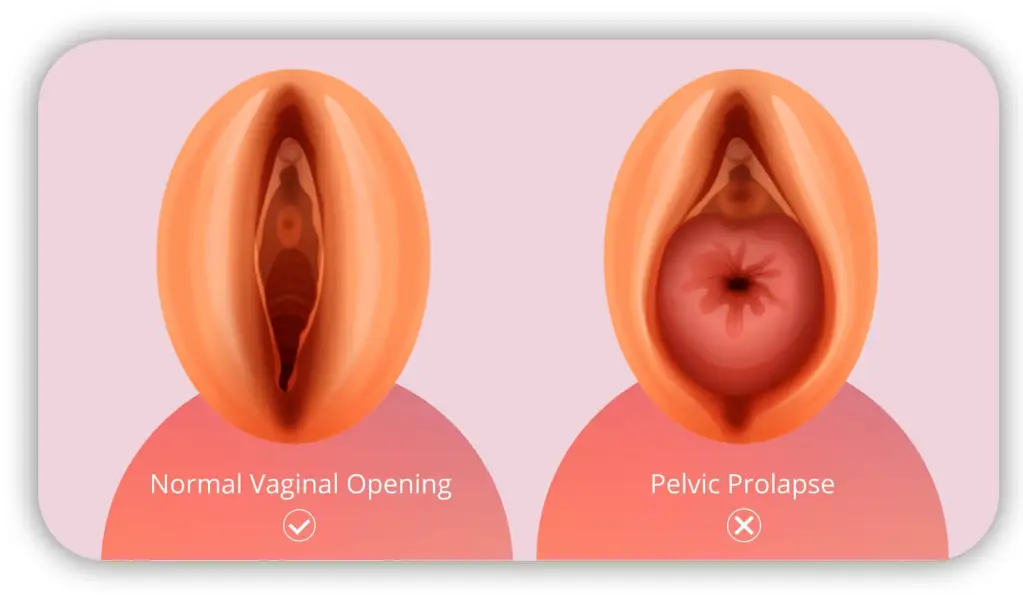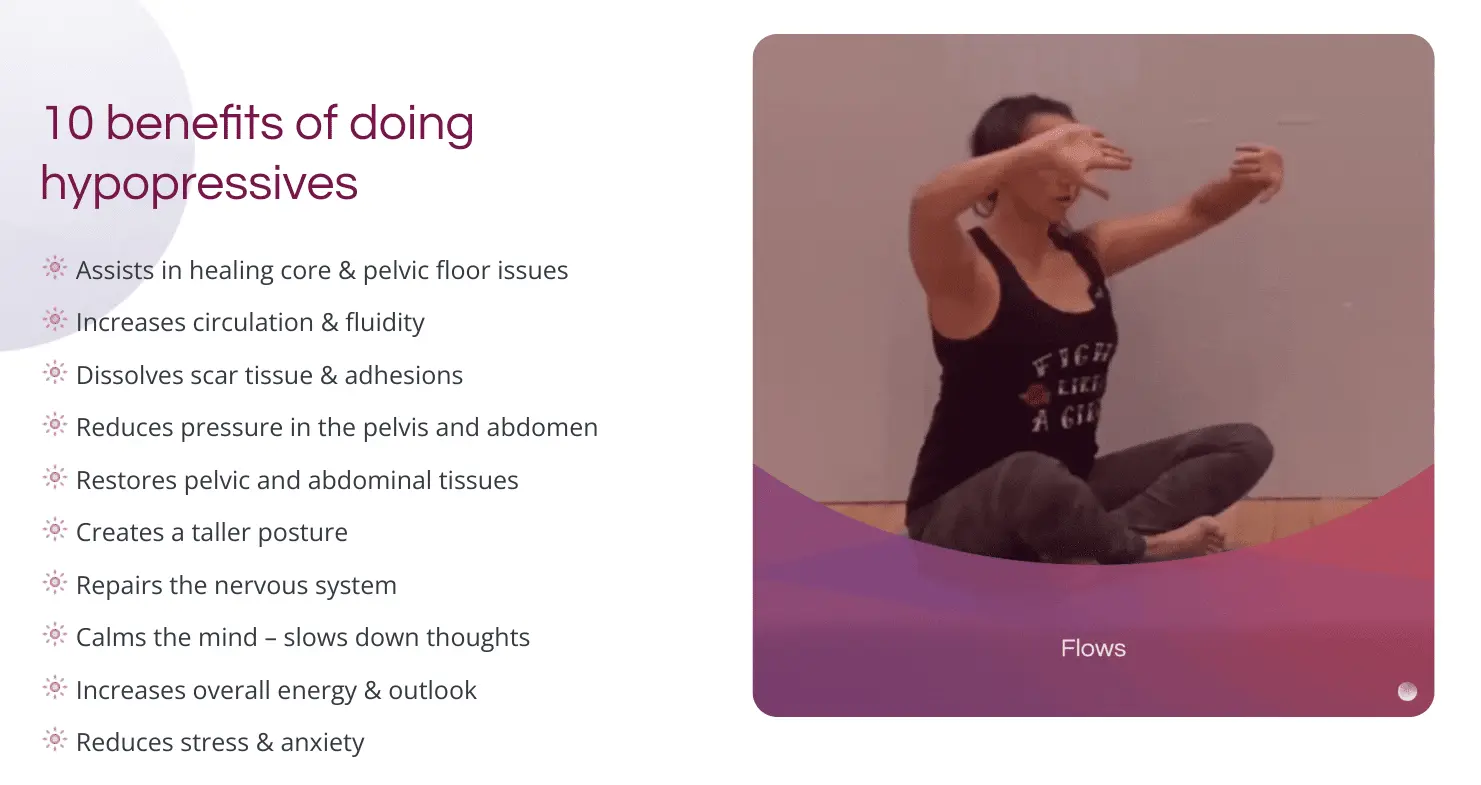How Are Vaginal Scar Tissue and Pelvic Floor Prolapse Connected?
- September 21, 2022
- Pelvic FloorVagina Health

Having scar tissue in the vagina after birth is very common. But what does this mean for your pelvic floor? And can it lead to pelvic floor dysfunctions (PFD), such as prolapse, incontinence, pain, and heaviness?
These are good questions and ones that don’t always come with answers. At least not from your doctors or physiotherapists because of how neglected pelvic floor & postpartum health is.
So although vaginal scar tissue after childbirth is common for most women, that doesn’t mean it’s something to fear.
We are going to shed some light on the connection between scar tissue and PFD in this blog so that it doesn’t sound or feel like a scary thing.
Let’s get started!
A quick refresher on vaginal scar tissue
Vaginal scar tissue often forms after giving birth because of the tearing that occurs during labor.
But what about women who don’t give birth vaginally?
This might surprise you. There can be scar tissue in the vagina for women who delivered via c-section because pregnancy can cause scar tissue.
Also, if you had a traumatic experience giving birth in the hospital or at home, scar tissue can result as well.
How does this happen?
Well, trauma gets trapped in our muscles and fascia (connective tissue). In the case of pregnancy and delivery, this trauma can get stored in the muscles and fascia found in your pelvic bowl.
In addition, the emotions connected to the trauma, such as fear, shock, terror, and sadness, can also get stuck in the muscles, fascia, and even the organs of our body – leading to scarring and adhesions in the fascia.
These types of traumas and related emotions can result in scar tissue in your vagina, which can cause prolapse or other types of pelvic floor dysfunctions.
Even though there are several ways vaginal scar tissue can form and several types of conditions that can come from it – there are also several ways to dissolve (or heal) it.
Before we get into the topic of ‘how to heal vaginal scar tissue,’ let’s first talk about the way it can affect our bodies.
Besides prolapse, what other pelvic floor dysfunctions can result from scar tissue?

Some other conditions and symptoms connected to having scar tissue in the vagina include:
- Incontinence
- Heaviness
- Pelvic Pain
- Low libido
- Numbness in the vagina
- Vaginal wideness
- Queefing
The connection between scar tissue, prolapse & other pelvic floor dysfunctions
Vaginal scar tissue and adhesions can create a lot of different imbalances in the vaginal canal and within the muscles in the pelvic floor. Over time this scarring can cause the tissues in these areas to become dense.
And when the tissues become dense, it’s hard for them to stay vital and healthy because oxygen and circulation (two very important pieces for health) can’t reach the tissues as easily.
In addition, scar tissue pulls down on the pelvic tissues, which is similar to the effect gravity has. Plus, when you consider the times we sit, stand, and walk – these events and circumstances cause the tissues to become weak.
And with weak tissues being pulled down by dense tissues, it’s difficult to hold the weight of the organs in the pelvic bowel – the bladder, uterus, and rectum – in their proper place.
Eventually, this can all lead to the “dropping” of these organs, leading to uterine, bladder, rectal, and other types of prolapses.
This set of circumstances is also the reason numerous other pelvic floor issues exist, like incontinence (leaking urine), pelvic pain, low libido, and burning/numbing sensations.
Now that you understand how and where the pelvic dysfunction came from, what can you do about it?
We’re about to get into that now.
Vaginal injury healing scar tissue
In order to heal scar tissue after birth, an injury, or a physical, emotional, or sexual trauma – you need to give the scar tissue circulation, nourishment, and some cleaning.
This is what helps to dissolve and melt away scar tissue and bring fluidity, health, and vitality back to the cells and tissues in your pelvic floor.
But how do you do this? We’ll talk about the different healing options you can explore and try.
Work with different methods to dissolve vaginal scar tissue
To heal prolapse and other pelvic floor dysfunctions, it requires more than applying pressure on the scar tissue to dissolve it, although this is very helpful when done correctly. In fact, to explore this technique on your own, you can follow this guided, and gentle scar tissue remediation practice.
Other areas that need to be addressed include the emotional component of the scarring along with considerations around diet, sleep, stress, and negative thought patterns.
All these variables play a part in your body’s ability to heal itself. This is why a combination of methods is necessary to fully heal scar tissue in the vagina.
Other methods to try include:
1. Body-based movements that increase fluidity and circulation in the body like hypopressives, block therapy, belly dance, and pelvic steaming.
2. Mind-based healing modalities like visualizations, affirmations, meditation, and breathwork.
3. Emotional healing methods like EFT tapping, journaling, verbal expression through compassionate sharing, and shaking.
Looking for a program that offers all these healing methods and more? Check our Pelvic Floor Dysfunction Program to see if it’s the missing piece in your healing protocol.
One of my favorite methods I used to heal a grade 3 prolapse was vaginal steaming, also referred to as yoni steaming or pelvic steaming.
What is pelvic steaming for prolapse?

This method is just as it sounds, the steam from a hot pot of water and herbs sits underneath your vagina. You can set up the steam underneath you on the floor while in a quadruped (all fours) position, or while sitting on a supportive yoni steam chair that has a small hole where the steam comes out.
One of our MoonRise practitioners, Rebecca Tiger, created a course about pelvic steaming to teach our customers:
- How to steam safely
- Herbs for yoni steam
- How to set up your environment for pelvic steaming & the different steaming positions
- General do’s and don’ts of pelvic steaming
- Benefits of vaginal steaming
- Steaming for Prolapse
- Steaming for UTIs
- Steaming for Heavy Bleeding & Irregular Cycles
- Steaming for Hemorrhoids & Other Imbalances
- Steaming for Low Libido
- Steaming for Dryness
- Several guided meditations to do while steaming
- Breathwork exercises for the womb
As you can see, there is a lot of information and depth behind this course. And rightfully so, because this technique is new to many and needs to be done in the way it was intended – when it originated 1,000s of years ago.
For guidance about pelvic steaming or any of the healing methods we mentioned in this blog, please feel free to book a free 15-minute consultation with us, so we can answer any questions you have.
We are here to support you on your healing journey – wherever it may take you!

Blog posts you might like:






